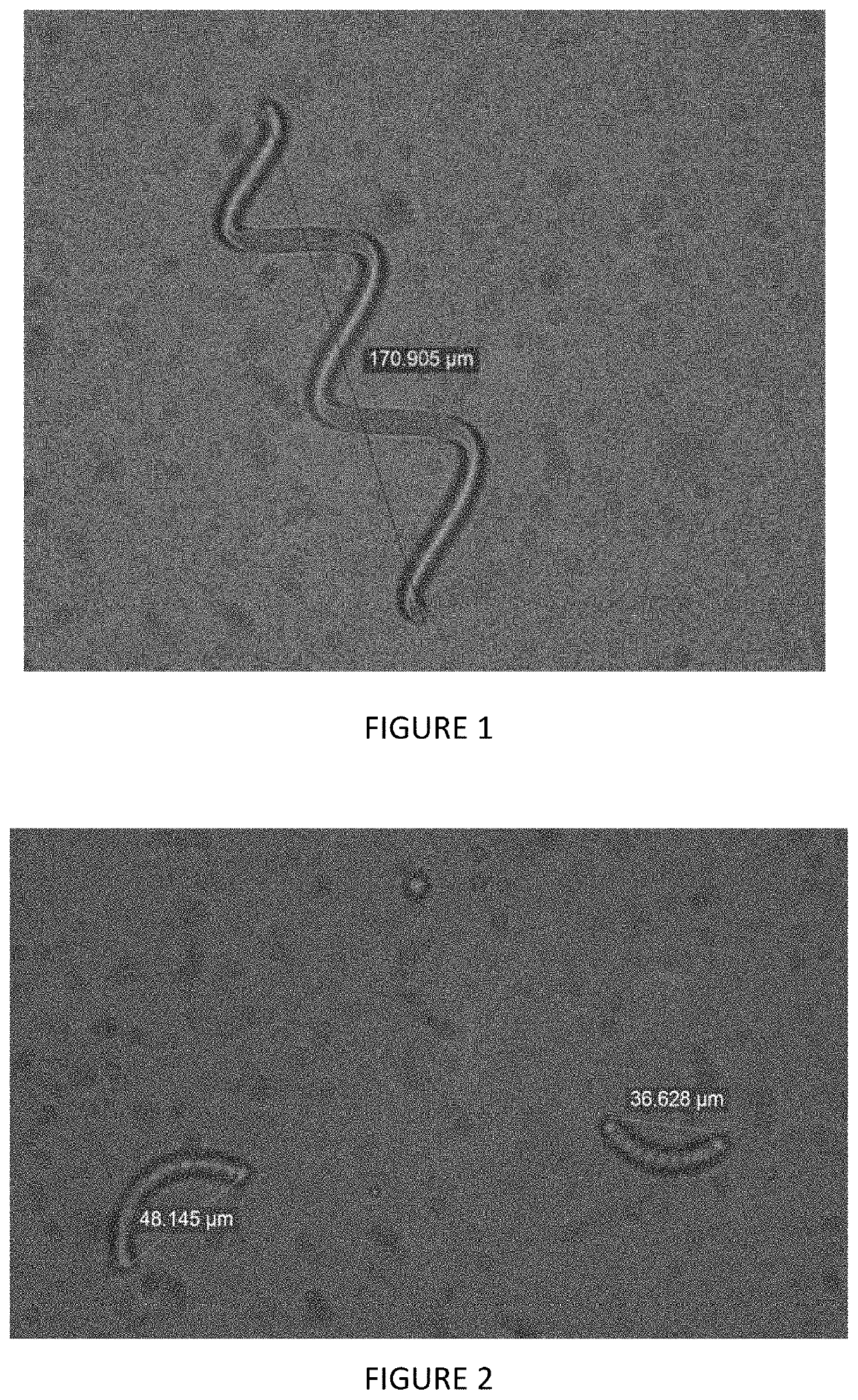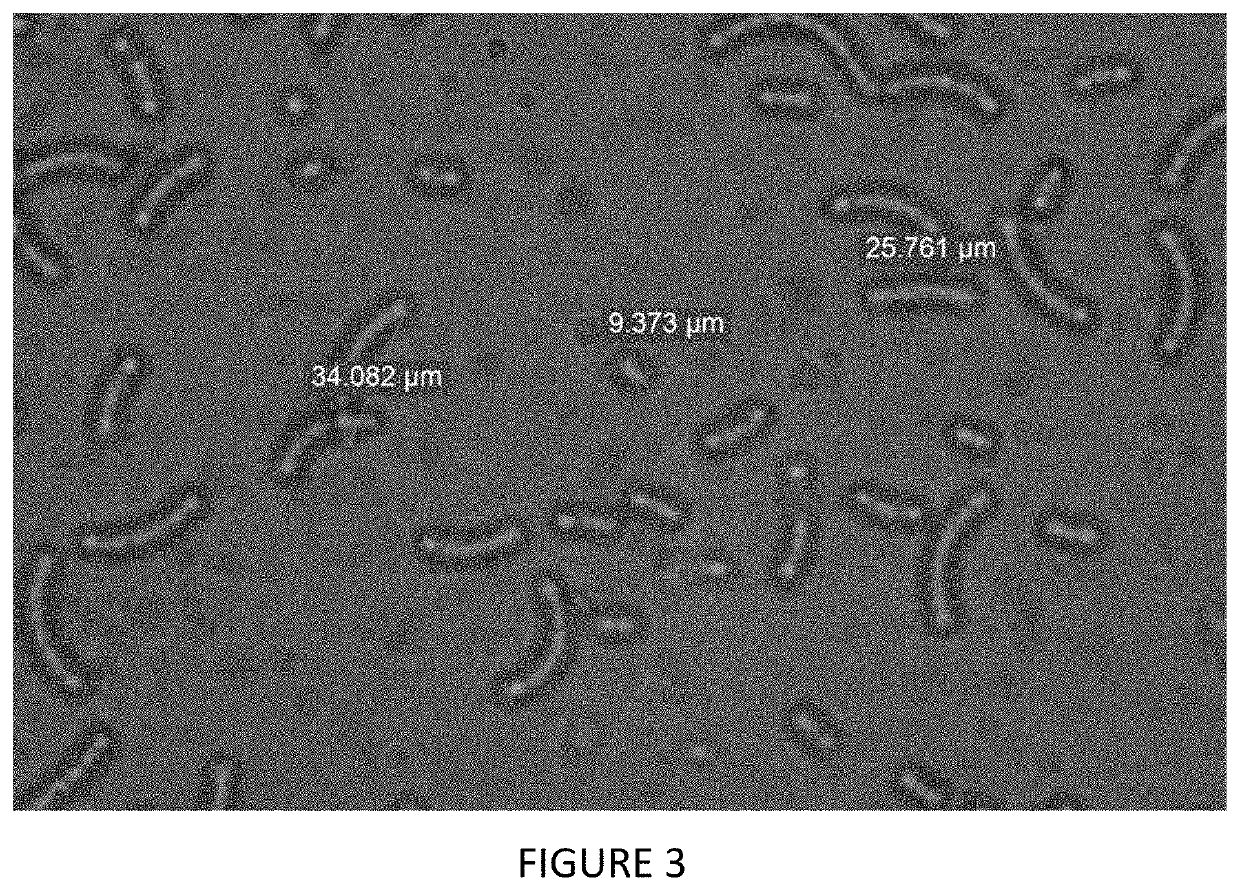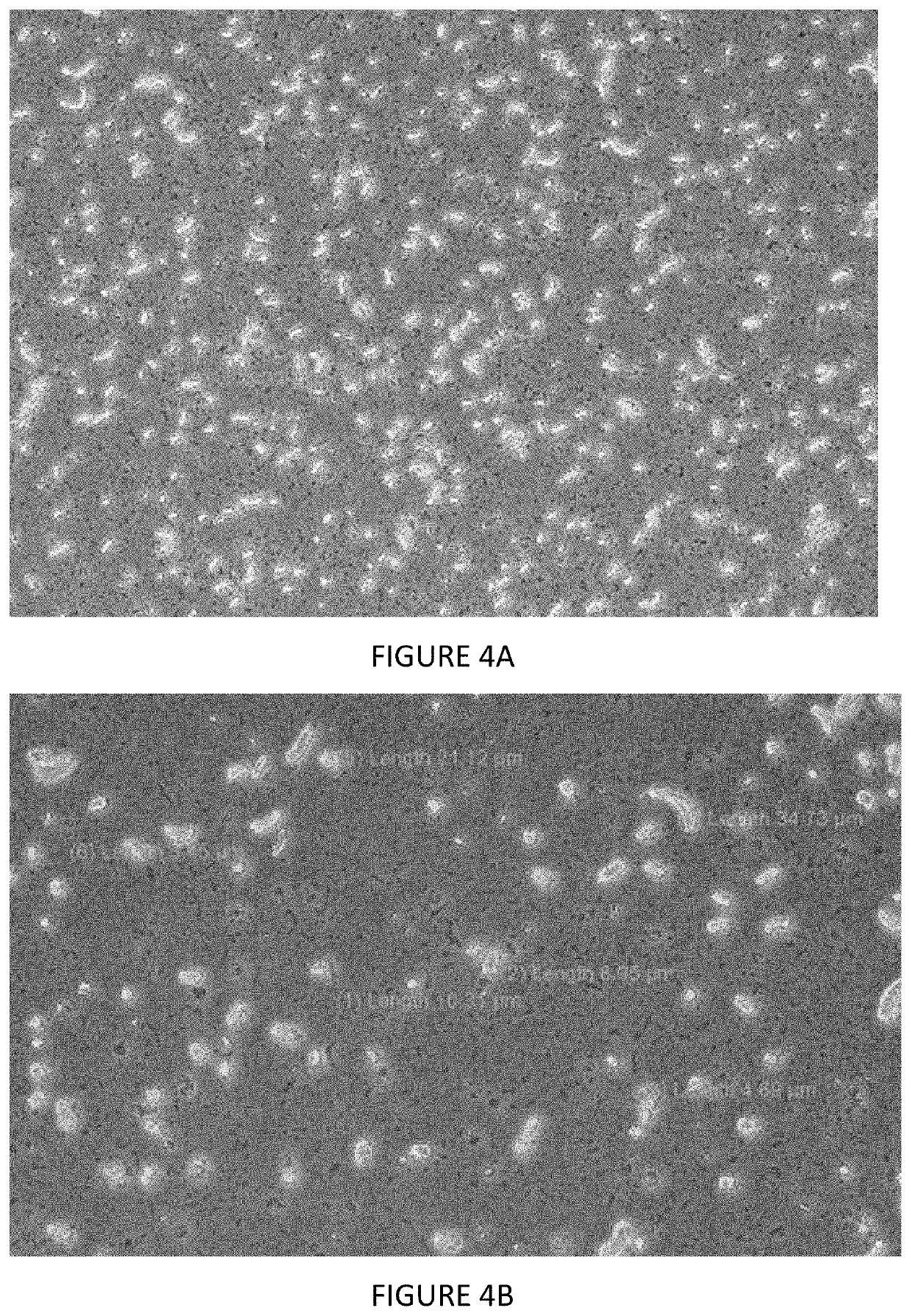Processes for obtaining colors from algal biomasses
- Summary
- Abstract
- Description
- Claims
- Application Information
AI Technical Summary
Benefits of technology
Problems solved by technology
Method used
Image
Examples
example 1
[0025]Spirulina biomass was suspended in tap water or phosphate buffer at about 15% biomass. The suspended biomass was passed through an Arisdyne controlled flow cavitation unit model no. CM22 (catalog no. CWDSH3558t-2) attached to a pump (MO3EHSJSSSMK) at varying pressures ranging from 500-750 psi. The cavitation unit used to perform the lysis of the present invention had orifices of 11 μm and 66 μm, where the biomasses passed through the smaller orifice first.
[0026]Light phase microscopy was used to visualize various Spirulina biomasses of the present invention. A sample of the feed Spirulina biomass before being passed through the cavitation unit is shown in FIG. 1. A sample of the Spirulina biomass after being passed one time through the cavitation unit at 500 psi is shown in FIG. 2. A sample of the Spirulina biomass after being passed one time through the cavitation unit at 700 psi is shown in FIG. 3.
[0027]FIGS. 1-3 illustrate the ability of cavitation to reduce the whole Spiru...
example 2
[0028]The lysed biomasses were centrifuged and filtered to produce a product having a blue tint. The product having the blue tint may be used as a colorant or further processed to yield a more purified colorant.
example 3
[0029]A spray dried Spirulina powder was combined with water or a phosphate buffer solution to produce a slurry having 4% dry solids. The slurry was passed through a cavitation unit substantially as described in Example 1 at varying pressures of 100, 300, or 500 psi. The cavitation liberated the phycocyanin from the spray dried Spirulina powder. The orifice sizes of the cavitation unit were 65 μm and 11 μm, where the slurry entered the larger orifice first. Table 1 includes the conditions for the cavitation, the particle size before cavitation, and the amount of phycocyanin (PhC) extracted in relation to the biomass.
TABLE 1Steep timeCavitationParticle sizePhC after cavitation(hours)PressureTemperaturepHbefore cavitationcalculator to biomass0100ambient6.570.82.370300ambient6.570.85.030500ambient6.570.85.40110050° C.6.570.84.11130050° C.6.570.84.73150050° C.6.570.87.391100ambient6.570.82.361300ambient6.570.82.181500ambient6.570.82.68
[0030]FIGS. 4A and 4B show light microscopy images o...
PUM
| Property | Measurement | Unit |
|---|---|---|
| Pressure | aaaaa | aaaaa |
| Pressure | aaaaa | aaaaa |
| Pressure | aaaaa | aaaaa |
Abstract
Description
Claims
Application Information
 Login to View More
Login to View More - R&D Engineer
- R&D Manager
- IP Professional
- Industry Leading Data Capabilities
- Powerful AI technology
- Patent DNA Extraction
Browse by: Latest US Patents, China's latest patents, Technical Efficacy Thesaurus, Application Domain, Technology Topic, Popular Technical Reports.
© 2024 PatSnap. All rights reserved.Legal|Privacy policy|Modern Slavery Act Transparency Statement|Sitemap|About US| Contact US: help@patsnap.com










